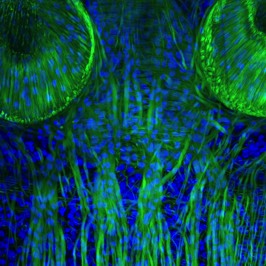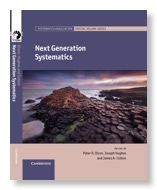
A research program in the developmental biology of NTDs
Parasitic flatworms comprise a large group of extraordinarily diverse animals that includes some of the most significant Neglected Tropical Diseases of ourselves and our domesticated animals, such as bloodflukes (Schistosoma) and tapeworms (Taenia, Echinococcus). We have developed the beetle/rodent-hosted tapeworm Hymenolepis microstoma as a tractable laboratory model for studying the development, genomics and evolution of these parasites.
Planarians are free-living cousins of parasitic flatworms that have served as powerful models of regeneration and stem cell biology for well over a century. Unlike most animals, including ourselves, flatworms maintain pluripotent stem cells throughout their lives, enabling both whole-body regeneration and ‘immortal’ growth. Although free-living and parasitic animals have been studied historically in separate fields of science, contemporary knowledge demonstrates that this approach has been misguided and a hindrance to understanding the biology of both types of organisms.
Our research aims to understand parasitic flatworms in the context of their natural animal affinities and draws heavily on our understanding of the gene regulatory networks that underpin development and regeneration in planarians. In this way, our work contributes to global efforts to control and eradicate the NTDs that diminish our health and economy.
PHOTO CREDIT: Alex Gruhl
We are grateful to the Natural History Museum, BBSRC, The Wellcome Trust Sanger Institute, The Royal Society, Marshall Aid Commemoration Commission, National Science Foundation and additional funding bodies for their generous support of our work.
RECENT PUBLICATIONS
Olson et al. 2020. Complete representation of a tapeworm genome reveals chromosomes capped by centromeres, necessitating a dual role in segregation and protection. BMC Biology PUBLICATIONS
James and Olson. 2020. the tapeworm interactive: inferring confidence scored protein-protein interactions from the proteome of Hymenolepis microstoma PUBLICATIONS
International Helminth Genomes Consortium. 2019. Comparative genomics of the major parasitic worms. Nature Genetics PUBLICATIONS
NEWS

Available Now! Next Generation Systematics 2016. PD Olson, J Hughes and JA Cotton (ed.). Cambridge University Press
NEWS
Olson et al. 2020. Complete representation of a tapeworm genome reveals chromosomes capped by centromeres, necessitating a dual role in segregation and protection. BMC Biology PUBLICATIONS
James and Olson. 2020. the tapeworm interactive: inferring confidence scored protein-protein interactions from the proteome of Hymenolepis microstoma PUBLICATIONS
International Helminth Genomes Consortium. 2019. Comparative genomics of the major parasitic worms. Nature Genetics PUBLICATIONS
NEWS

Available Now! Next Generation Systematics 2016. PD Olson, J Hughes and JA Cotton (ed.). Cambridge University Press
NEWS